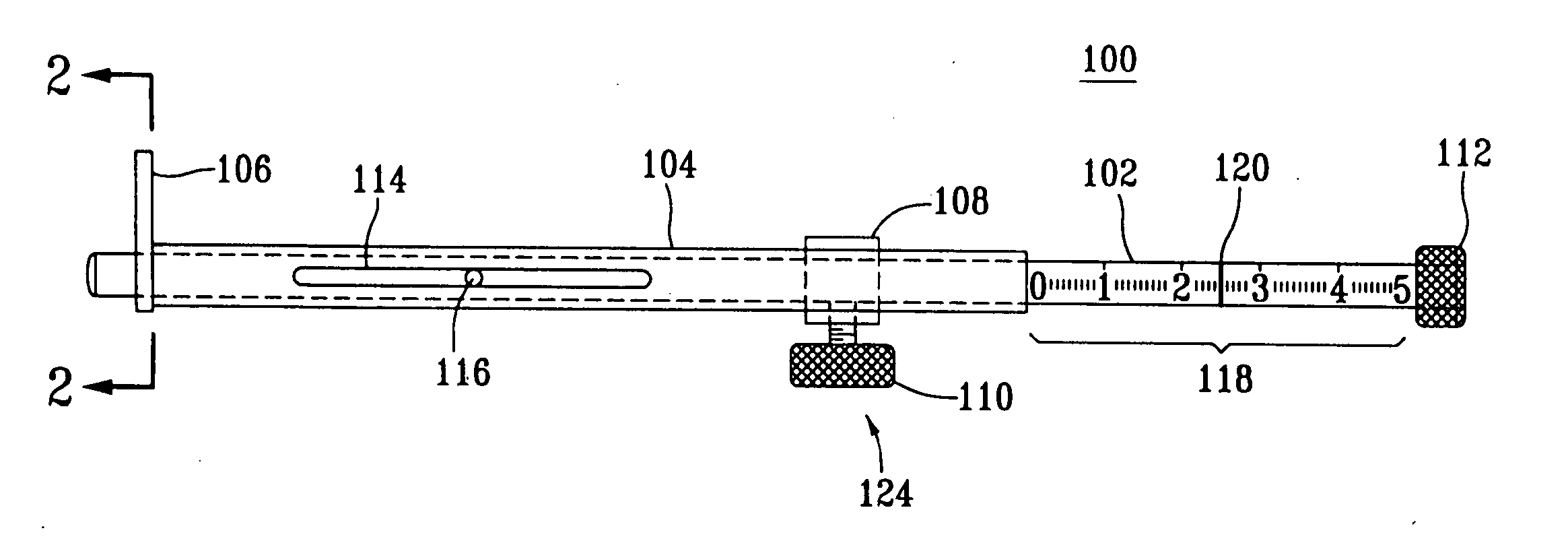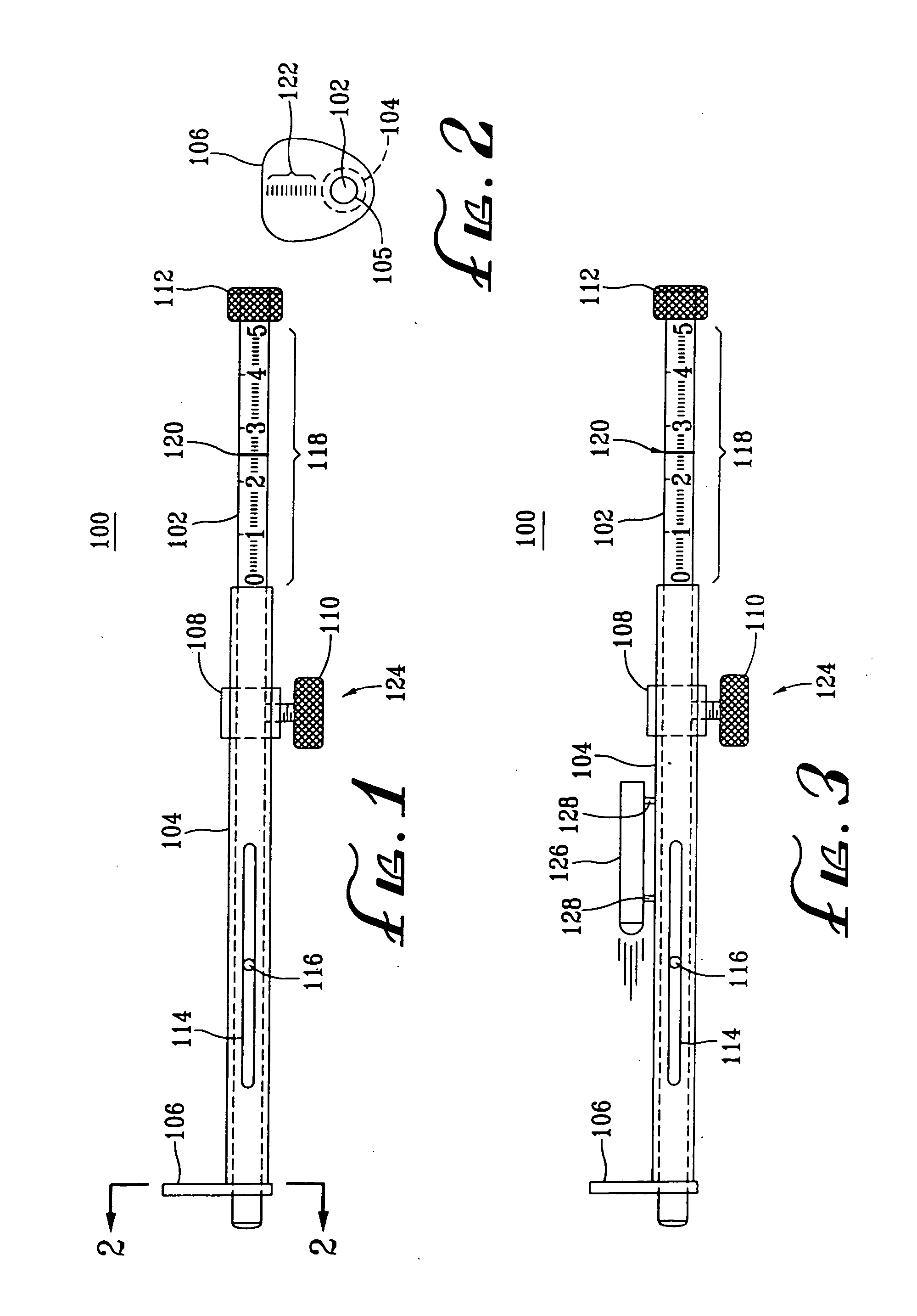Devices and methods for cervix measurement
a technology of cervix and measurement method, applied in the field of medical devices, can solve the problems of incompetence of the cervix, significant variation between practitioners, and inability to accurately measure the cervix
- Summary
- Abstract
- Description
- Claims
- Application Information
AI Technical Summary
Benefits of technology
Problems solved by technology
Method used
Image
Examples
example i
[0115] This example provides measurement of the length of the cervix in the vagina in a subject and correlation with reported criteria for determining the risk of preterm delivery.
[0116] The subject preferably lies in a prone position on her back. In one procedure, the practitioner uses a speculum to first examine the vaginal cavity and to observe the optimum position for placing the device. The practitioner then inserts into the vagina a device that includes a measurement member having a distal region and a proximal region, a hollow member through which the measurement member is inserted and advanced, and a flange engaged to the distal end of the hollow member. Alternatively, the practitioner may insert the device into the vagina without first using the speculum. The flange of the device has a surface adapted to contact the cervix at the external uterine opening after the distal end of the hollow member is inserted into the vagina. The practitioner next a...
example ii
Cervix Dilation Measurement
[0118] This example demonstrates the use of the invention disclosed herein to measure the dilation of the cervix uteri in the same subject as in Example 1, to predict the risk for preterm delivery or the particular stage of delivery in a normal pregnancy.
[0119] One of the devices of the present invention is used to measure the dilation of the cervix uteri. A physician inserts into the vagina a device that includes a measurement member having a distal region and a proximal region, a hollow member through which the measurement member is inserted and advanced, and a flange engaged to the distal end of the hollow member. The flange of the device has a surface adapted to contact the cervix after the distal end of the hollow member is inserted into the vagina, includes a measurement scale, and is substantially translucent. Also, the flange is preferably off-set to the side of the hollow member to allow the flange to cover the external uterine opening while als...
PUM
 Login to View More
Login to View More Abstract
Description
Claims
Application Information
 Login to View More
Login to View More - R&D
- Intellectual Property
- Life Sciences
- Materials
- Tech Scout
- Unparalleled Data Quality
- Higher Quality Content
- 60% Fewer Hallucinations
Browse by: Latest US Patents, China's latest patents, Technical Efficacy Thesaurus, Application Domain, Technology Topic, Popular Technical Reports.
© 2025 PatSnap. All rights reserved.Legal|Privacy policy|Modern Slavery Act Transparency Statement|Sitemap|About US| Contact US: help@patsnap.com



